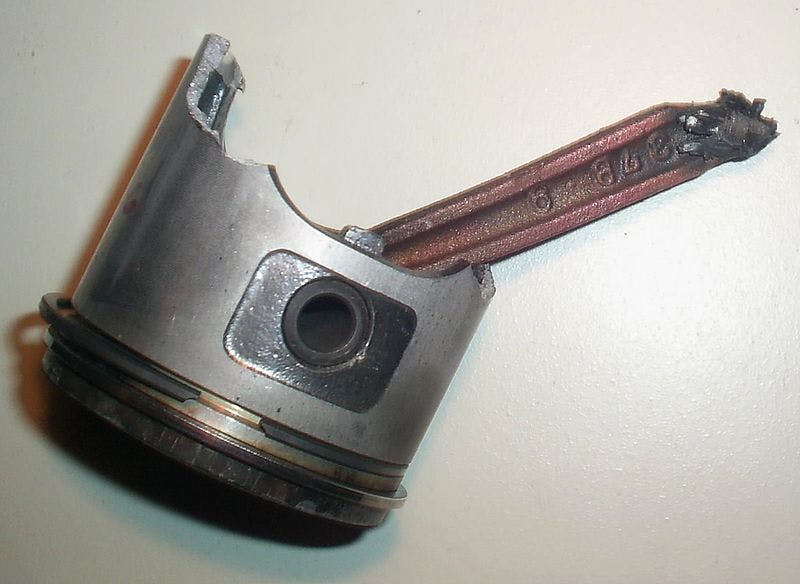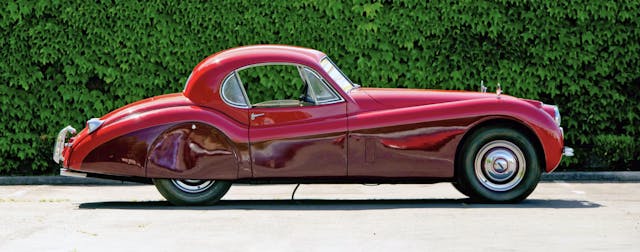Our Two Cents: The Weirdest Automotive Words
Words can be unnecessarily difficult in the English language, which does everything from borrowing words from other languages to organizing them in ways that makes no sense to non-native speakers. So for this installment of Our Two Cents, we asked the team here at Hagerty Media about automotive words we’ve encountered that are decidedly odd.
To be fair, we have only scratched the surface. There are oh-so-many words that fit the bill, and some of them are even crazier than the ones we came up with here. So have a look at what we think are weirdest words in the automotive lexicon, and sound off in the comments for ones you wish we brought up.
Kammback

“I’m gonna pick Kammback. That’s mostly because I love the design, but partially because I already wrote the definition for Vellum Venom:
“Kammback: a body design featuring a downward sloping roofline and rear deck that abruptly ends with a vertical panel (or near vertical). Proven to reduce aerodynamic drag by its namesake, Wunibald Kamm.” — Sajeev Mehta
Wrist Pin

“The wrist pin is definitely worthy of this list!” — Larry Webster
“Just for giggles, I googled to see if wrist pins are a thing for orthopedic surgery in a patient’s wrist. Who here thinks I got a relevant website from my search?” — Sajeev Mehta
Jubilee Clip

“Isn’t there something called a jubilee clip?” — Larry Webster
“I think the British call hose clamps ‘jubilee clips.’ That’s definitely a cooler name than hose clamp.” — Sajeev Mehta
Layrub Coupling

“And of course there are Laycock Layrub couplings: Only the Brits.” — Aaron Robinson
The, Absence of

“My vote is for the article the and the fact that the auto industry, particularly in Detroit, traditionally does not use an article as a modifier for car model names. For example, a Detroit marketing executive will say,
‘When we launched Malibu, we knew we would beat Camry.’
They do this instead of, ‘When we launched the Malibu, we knew we would beat the Camry.’ I’ve never understood it, I’ve always hated it. It’s like they want the car model to be considered an entity or something. So weird. You used to see it in print advertising copy. But there’s hardly any print advertising copy anymore, but that’s another story.” — Joe DeMatio
Spats

“Not only is ‘spat’ fun to say, because you spit the word out of your mouth, but it reveals an intersection between clothing and cars. Spats were originally a low-rise version of a gaiter (today, usually worn around your neck and/or mouth) for your ankle: a bit of cloth that you’d button over your shoe to keep dirt from getting inside it.
“In the automotive world, spats are removable panels that cover a car’s wheels … which do the same job that our feet (and shoes) do, although spats on a car don’t actually keep dirt from getting inside the tire; they’re mostly for aesthetic or aerodynamic value. Fun fact: Spat also refers to a cover over the upper part of a wheel on a plane.” — Grace Houghton
Splitter

“NACA duct, spoiler, valence—aero devices often have wonky names. The splitter is no different.
“To many a wing is a wing, no matter where you put it, but to the motorsports crowd wings have different monikers based on where they’re attached. Splitter, for example, is basically a wing on the nose that is flat to the pavement. The splitter diverts air to the nose of the car to create downforce. Downforce is good.
“Splitter, final answer. Oh, wait. Dzus fasteners! A ‘d’ followed by ‘z’, how cool is that?” — Cameron Neveu
Giubo

“I think the weirdest car word I’ve ever encountered is giubo, pronounced jew-boh. It’s a flexible coupling that allows rotational torque to be transmitted between a spinning shaft and the piece to which it is mated. Generally constructed of rubber, it corrects for misalignment in the system and dampens vibration. Commonly misspelled as ‘guibo,’ the term is a blend word derived from the Italian giunto, for ‘joint,’ and the engineer who patented it, Antonio Boschi, for use in the Alfa Romeo 1900. It is sometimes called a flex disc and is closely related to the rag joint.” — Stefan Lombard
“It is also known as a Rotoflex coupling, which is not as fun as my Laycock Layrub coupling suggestion.” — Aaron Robinson
***
Check out the Hagerty Media homepage so you don’t miss a single story, or better yet, bookmark it. To get our best stories delivered right to your inbox, subscribe to our newsletters.



I’ve read all six pages of these and am happy to be the first to mention “tyre spoons”. Learned from a Triumph service manual.
Grease Tit!
How about ‘donut’ for the Metalastic joint on the Hillman Imp transamission.
How about the steering assistance knob attached to the steering wheel (SAKSWATCH). Commonly called a suicide knob in pre-woke days?
I’ve always called them Necker’s Knobs.
OK …… how ’bout twin Smittys [daul exhaust] and blue dots [tail lights]
OK …… how ’bout twin Smittys [daul exhaust] and blue dots [tail lights]
OK, I get where the names for our “station wagon” and “estate wagon” came from (used to take passengers from the train station to the country estates), but what’s the origin of “shooting brake?” How did you Brits in the discussion arrive at that for your station wagons?
Also, the valve at the bottom of our radiators – “petcock?”
Look in the earlier comments about shooting brakes, possibly from the era of punt guns, when they needed long wagons to haul those things around.
How about the illumination for the transmission indicator?
The PRiNDL light.
And there’s the Cabriolet, or Cab, as in convertible, coming from the English two-wheeled , one-horse cart with a folding top in the 19th century, which came from the French version of the Italian “capriolo”, meaning a young goat, because the bouncing and swaying of such a cart was remindful of the skipping and bouncing of a kid (young goat). One who drove a horse-drawn cab for hire was a cabdriver, and now what she drives is a cab.
Even stranger, Brit’s shooting break for station wagon.
I have only read the word ‘scantlings’ in describing parts of an engine in British articles.
N.O.V.A. NOVA, OMEGA, VENTURA, APOLLO. SILLY WILLY, TRICKS ARE FOR KIDS!
Dzus was the name of the man that invented the very reliable 1/4 turn fastener which was most used on aircraft! The original factory still exists on Long Island NY.
The little windows that cars used to have at the front edge of the front door windows, and some had them at the rear edge of the back windows, too. My family called them “wind wings”, my wife insists they are “fly windows” and I seem to recall GM calling them “Ventipanes”. Those had a separate crank.
Also, in the late ’40’s lots of cars had a “fastback”, but they weren’t fast; there was something called the “bustleback” too.
es·cutch·eon
/əˈskəCH(ə)n,eˈskəCH(ə)n/
noun
1.
a shield or emblem bearing a coat of arms.
2.
a flat piece of metal for protection and often ornamentation, around a keyhole, door handle, or light switch.